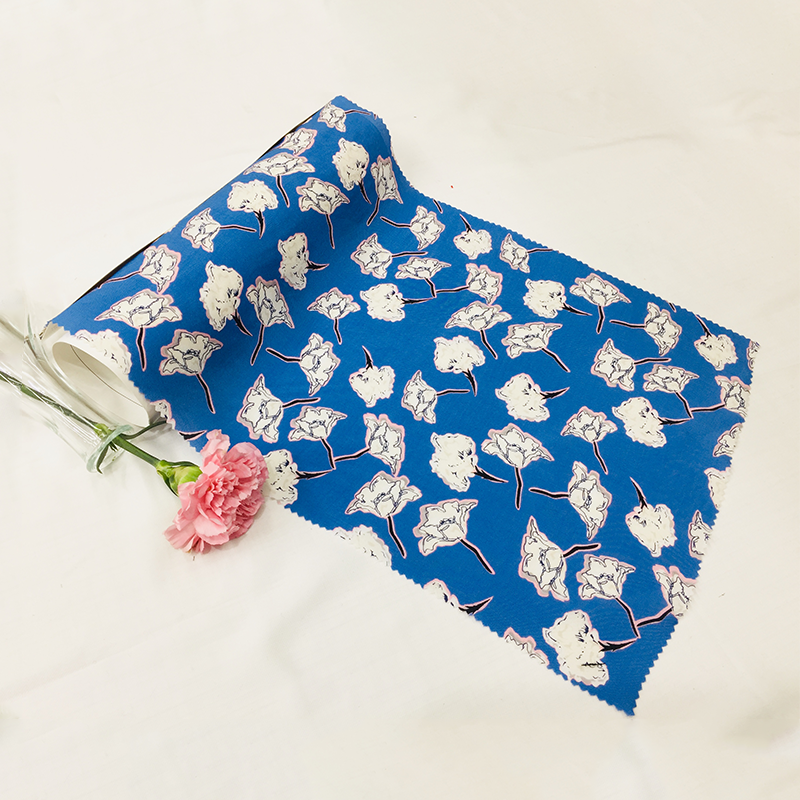In modern industrial silk, there are few 100% silk products, mainly the combination of natural fiber, artificial fiber cellulose.
Natural fiber
The natural fiber contained in silk is mainly silk fiber, which is a continuous long fiber formed by solidification of silk liquid secreted by mature silkworms during cocooning, also known as natural silk. It is one of the earliest animal fibers used by human beings, including mulberry silk, tussah silk, castor silk, cassava silk, etc.
Silk fiber is a kind of natural filament fiber, which has been used in practice. It is made of silkworm modified with mucus. Silk fiber is divided into many kinds due to the different feeding habits of silkworms, including the silk fiber formed by eating mulberry leaves, tussah silk fiber formed by eating tussah leaves other wild silk fibers formed by eating cassava leaves, horse mulberry leaves castor leaves. Mulberry silk fiber tussah silk fiber can keep the shape of filament fiber in the filament yarn formed by cluster, other kinds of wild silk fiber can only be changed into short fiber for textile processing. Among the filaments formed by the combination of mulberry tussah filaments, the filaments of mulberry are the most important, accounting for most of the natural filaments.
Silk structure
When silkworms spin, they spit out two silk at the same time, but when they solidify, they will combine to form a cocoon silk. The section of cocoon silk is similar to glasses. Each cocoon contains two silk fibers bonded together by sericin, which is called silk fibroin, that is, silk fibers without glue. It has a cross-sectional feature close to a triangle, but its shape cross-sectional area are uniform.
Silk fibroin, also known as silk fibroin, is the final silk fiber to be used.
Sericin is wrapped around the silk fibroin fiber, its existence will have an important impact on the use, processing product style of the fiber.
The sericin content on each cocoon silk is even. The sericin content of the silk the beginning to the end is low. The sericin content of the silk the end is high. Silk fiber has relatively perfect fibril structure, which can fully show the excellent quality of natural fiber.

chemical composition
Chemical composition of silk
Silk is a kind of protein fiber (fibroin; fibroin, fibroin). It is a kind of high molecular compound containing nitrogen, its single base is α amino acid. The general structural formula of α amino acid is RCH (NH2) COOH. Because its amino group is located on the α carbon atom next to the carboxyl group carboxylic acid, it is called α amino acid. It can be seen the general formula of silk fibroin molecular structure that, on different peptide groups of the whole macromolecular chain, the connected side groups are different, which is an important feature of natural protein fiber.
There are 18 kinds of amino acids that make up silk fibroin. The content of silk fibroin is about 70% - 80% of silk fibroin. Glycine (Gly), alanine (ALA) serine (SER) account for more than 80% of silk fibroin.
Modification
Although silk fibroin has many excellent performance, it is easy to absorb ultraviolet light denature because it contains a certain amount of hydroxyphenol group other structures in silk fibroin molecules. Under ultraviolet light, amino acid composition breaks down whiteness decreases significantly. With the increase of irradiation time, the yellowing degree of silk fibroin also increases, especially in the presence of water, yellowing is more serious [3-4]. The mechanical thermal properties also decreased significantly [5] It has a great influence on its properties, silk fibroin is difficult to dye easy to fade. In order to improve the defects, it must be modified. The modification can be improved by biological gene method chemical physical methods, usually chemical modification polymer blending.
Man-made fiber
Man made fiber is a kind of non natural fiber which is made by physical chemical methods. It can be divided into two kinds: regenerated fiber chemical fiber. Regenerated fiber is a kind of material which uses some natural polymer compounds their derivatives as raw materials, dissolves into textile solution, then spins into fibrous materials by spinneret; chemical fiber is a kind of synthetic fiber which uses oil, natural gas, coal agricultural by-products as raw materials. The main purpose of adding man-made fiber to silk is to make silk anti wrinkle, anti moth easier to preserve.
Man-made fiber has only a history of 100 years. Before that, human beings relied on natural fibers such as cotton, wool, silk hemp to be used in textile, clothing other production fields. After the 1950s, various synthetic fibers came out successively, with large quantity low price, which greatly enriched the total output use range of textile fibers became the competitors of natural fibers. The raw material of synthetic fiber is oil, but the earth's oil resources are exhausted 30-50 years later. With the continuous progress of social economy the change of consumption consciousness, in order to cope with the oil crisis adapt to the global trend of environmental protection concept, the fiber industry is also gradually moving towards the development use of natural fiber. All kinds of new fibers, such as natural color cotton, bamboo fiber, Lyocell fiber, PLA fiber, soybean protein fiber, silkworm chrysalis protein fiber, have the characteristics of natural fiber, only excellent performance but also environmental protection.